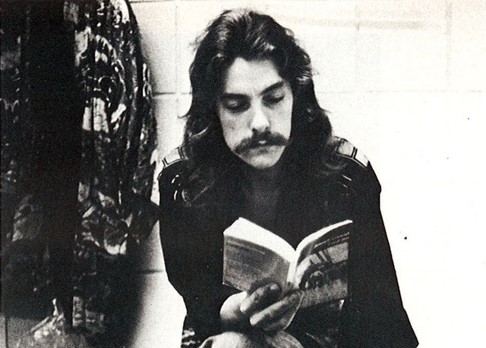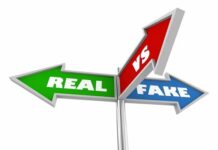By Ralph Greco, Jr.
As often as they are accused of being sex, drugs, and rock n’ roll layabouts, many are wise beyond their years. Queen’s Brian May and Dean Torrance of the duo Jan and Dean hold advanced degrees. Others like Leonard Cohen, Patti Smith and Nick Cave have written literary tomes as illuminating as their records. Needless to say, there are loads of musicians who are brainy, clever…and extremely well-read. In fact, numerous book smart musicians have tapped into their literacy when it comes to their work. Here’s a few examples.
1) Oh, the many tales we tell – Plenty of songs, albums, and even rock stars’ lives have been guided by religious or spiritual texts. Jon Anderson arguably outdid many in his explorations down the road to enlightenment by basing Yes’ 1973 opus, Tales From Topographic Oceans, on the 1946 book Autobiography of a Yogi. The book was recommended to him by King Crimson percussionist Jamie Muir, who was so touched by its power that he quit music and became a Buddhist monk. In a footnote, the book’s author Paramhansa Yogananda describes one of the famous Hindu texts, known as the Shastras. That description so gripped Anderson that when Yes toured Japan, the Yes frontman began to lay out a framework for Tales From Topographic Oceans in his hotel room nightly. He enlisted guitarist Steve Howe to collaborate on what would become a sprawling four-song, double album. The album was a big reason keyboardist Rick Wakeman left Yes (for the first time). The record still divides fans to this day.
2) What’s in a name? – Sometimes it’s not the music that’s inspired by literature. Steely Dan named the band after a steam-powered sex toy mentioned in William S. Burroughs novel, Naked Lunch. Soft Machine named themselves after a Burroughs novel of the same name. Steppenwolf followed suit, naming the band after a Herman Hesse novel. And, of course, Jim Morrison, a voracious reader and prolific poet, named his band after Aldous Huxley’s The Doors of Perception.
3) Quite the ‘cutup’ – Speaking of Burroughs, the notorious Beat writer was a proponent of the “cut-up technique,” a concept that can be traced back at least as far as the Dadaist writers of the 1920s. Burroughs and his contemporaries were fond of taking phrases and words cut from magazines and newspapers and rearranging them at random, creating whole new passages from these pastings. David Bowie, Radiohead’s Thom Yorke, and Nirvana’s Kurt Cobain are just three popular musical artists who employed this technique in their work.
4) First salvo across the bow – I could mention hundreds of songs that reference or pull lyrics straight from great literary works. Metallica’s song “For Whom The Bell Tolls” is based on the book of the same name by Ernest Hemingway. Jefferson Airplane’s “White Rabbit” is inspired by Lewis Carroll’s Alice’s Adventures in Wonderland, while the Beatles referenced Carroll in “I Am the Walrus.” One song, however, that sticks out is Kate Bush’s “Wuthering Heights.” Inspired by the Emily Brontë classic of the same name, this was the song that introduced Kate Bush to the world. Interesting fact: Bush and Brontë share the same birthday: July 30.
5) Led Zeppelin and those furry-footed fellows – That they had a thing for wizards, exotic locations, and the occult, many a Led Zeppelin scholar could argue. Singer Robert Plant was especially drawn to J.R.R. Tolkien’s worlds. The misty mountains mentioned in Zep’s “Misty Mountain Hop,” appear in The Hobbit, while “Ramble On” alludes to both Mordor, a famed Tolkien spot, as well as Gollum, a major character of Tolkien’s Lord of The Rings trilogy.
6) A personal connection – Lou Reed’s connection to the poet Delmore Schwartz is the stuff of deep affection. Reed studied creative writing and literature at Syracuse University with the talented yet disturbed Schwartz. When the “Walk On The Wild Side” scribe was awarded with an alumni award from Syracuse, Reed said: “Who would have believed this one? I hope, Delmore, if you are listening, that you are finally proud as well. My name is finally linked to yours in the part of heaven reserved for Brooklyn poets.” “European Son,” from 1967’s The Velvet Underground & Nico, and “My House,” from Reed’s 1981 solo album The Blue Mask, serve as tributes to Schwartz.
7) Thick as a paper – The original pressing of Thick As A Brick, Jethro Tull’s fifth studio album, contains an actual newspaper, called the The St. Cleve Chronicle & Linwell Advertiser. In its pages, we meet the supposed writer of Thick As A Brick, eight-year-old child prodigy Gerald Bostock. Filled with wacky articles, advertisements, and a whole bunch of general silliness, the pages, penned mostly by Tull frontman Ian Anderson, are rumored to have taken longer to produce than the actual music.
8) Wakeman follows Jules Verne – Basing an album on a religious footnote, mentioning a reference in a lyric, even befriending a literary giant or trying on some well-known technique of great writers is all well and good. The granddaddy of the rock and literature connection may well be Rick Wakeman’s Journey To The Centre Of The Earth. Wakeman’s live album truly represents the marriage of classic fiction with music. The keyboardist even enlisted a narrator to read passages from the famous adventure yarn amidst the music emanating from a band, choir, and orchestra.
9) First the music, then the book – The books and philosophy of Ayn Rand had a profound influence on Rush’s music, especially 1976’s epic 2112. Their final studio album, 2012’s Clockwork Angels, however, actually inspired a book. Science fiction writer Kevin J. Anderson, a friend of Rush drummer and lyricist Neal Peart, wrote a novelization of the album. Three years later, Anderson released a sequel called Clockwork Lives.
10) Another personal connection – In Martin Scorsese’s brilliant 2005 Bob Dylan documentary, No Direction Home, there’s an interview with Beat poet Allen Ginsberg who is so exuberant in his praise of Bob Dylan that he actually comes to tears describing how the songwriter took the zeitgeist of what the poet and his contemporaries were doing to a wholly new level. As evidenced in the 1978 film, Renaldo and Clara, Dylan has Ginsberg play a character known as “The Father” because he viewed him as a true father figure and mentor. Dylan even slipped the Ginsberg into the background of the ground-breaking video for “Subterranean Homesick Blues” and collaborated with him on songs intended for a full album called Holy Soul Jelly Roll: Poems & Songs.




















